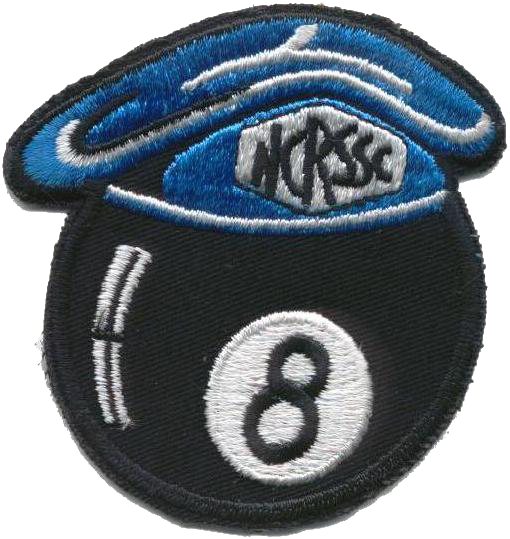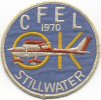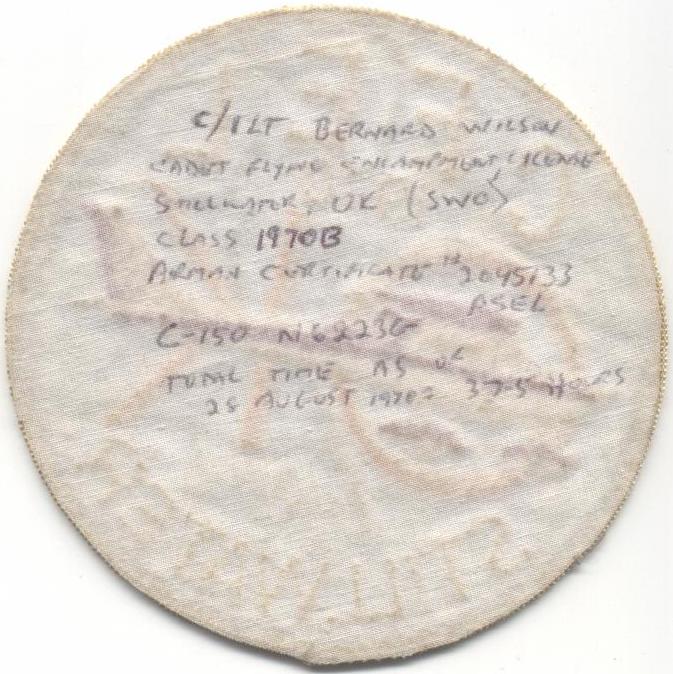

Heraldry
"The blue beret perched atop of the eight ball represents the Blue Berets. The number '8' represents the seven wings and region headquarters within the North Central Region. The eight ball represents the fact that Blue Berets are always 'behind the eight ball' when called out on missions."
 History
History
Around 1969, Mike Vorachek of Idaho Wing and Chaplain Raymond Aydt created the 8-ball design. It was based upon the plastic, liquid-filled 'Magic 8-ball' toy from Mattel - shake it up and it gives you an answer. It was inferred that the only decisions being made at one particular activity were made by the 8-ball and not the cadet staff. Putting the beret on top of it was only natural. Chaplain Aydt and Mike Vorachek went downtown in Williston, ND and had a drawing made. Later, they presented it to [then] Col William Cass, founder and commander of the Iowa Wing Blue Berets. He got a great kick out of it and the idea rapidly caught on. At the first Blue Beret reunion in 1969 held at Ledges State Park in Iowa, Chaplain Aydt presented the 8-ball design. When the activity's name changed from Iowa Wing Blue Berets to North Central Region Special Service Corps, the letters 'NCRSSC' were added to the 8-ball's beret, and the first pocket patches were made.
The 8-ball patch fell into disuse as the years went by, but in 1987 Captain Ken Gleich of Missouri Wing learned about the design. It was resurrected briefly during the last few years of Blue Beret when the activity became 'CAP-EAA Oshkosh' ran by Great Lakes Region. Very shortly after Blue Beret returned as a national activity in 1995, a new shoulder patch featuring the Saint Alban's Cross came into use.
Information provided by:
Christopher Yaroch




"Cadet Flying Encampments were held from approx 1965 through 1972 or 1973. The first one was at Elmira, NY, to the best of my knowledge, in gliders. Flying encampments took different forms, including glider solo, glider license, power solo, power license. They were held at various locations, including Reno-Stead (1966/67? through 1968) and Lawton, OK (maybe 1967 or 1968). The flying encampment in 1968 at Reno-Stead also hosted Cadet Officers School."
"Starting in 1969, Flying Encampment was held over two sessions at two different locations, for a total of four sessions. The locations were Oklahoma State University (Stillwater), and University of Oklahoma (Norman). Accomidations were student dorms, with instruction contracted out to the university flight schools."
"Our CFEL patch was going to have a red C-150 on it, until we were reminded that red was th color for University of Oklahoma (Norman), while we were at Oklahoma State University (Stillwater) which used orange. As far as I know, only 40 were made."
Information and patch provided by:
Capt Bernard J "Bernie" Wilson, California Wing

This is the original Civil Air Patrol patch, designed by Lt Col Steve Austen, for the United States Air Force Academy Survival Course National Special Activity. This activity ran from 1977 until 1982 and involved several days of classroom work followed by several days of practical application in the mountains of Colorado.
The elements on the patch design are:
Information provided by:
Lt Col Shawn Stanford
NOTE: It's believed that a USAF Academy "SERE" course patch may have been used as a substitute for the original CAP patch at some point during the activity's six year exsistance. -Ace